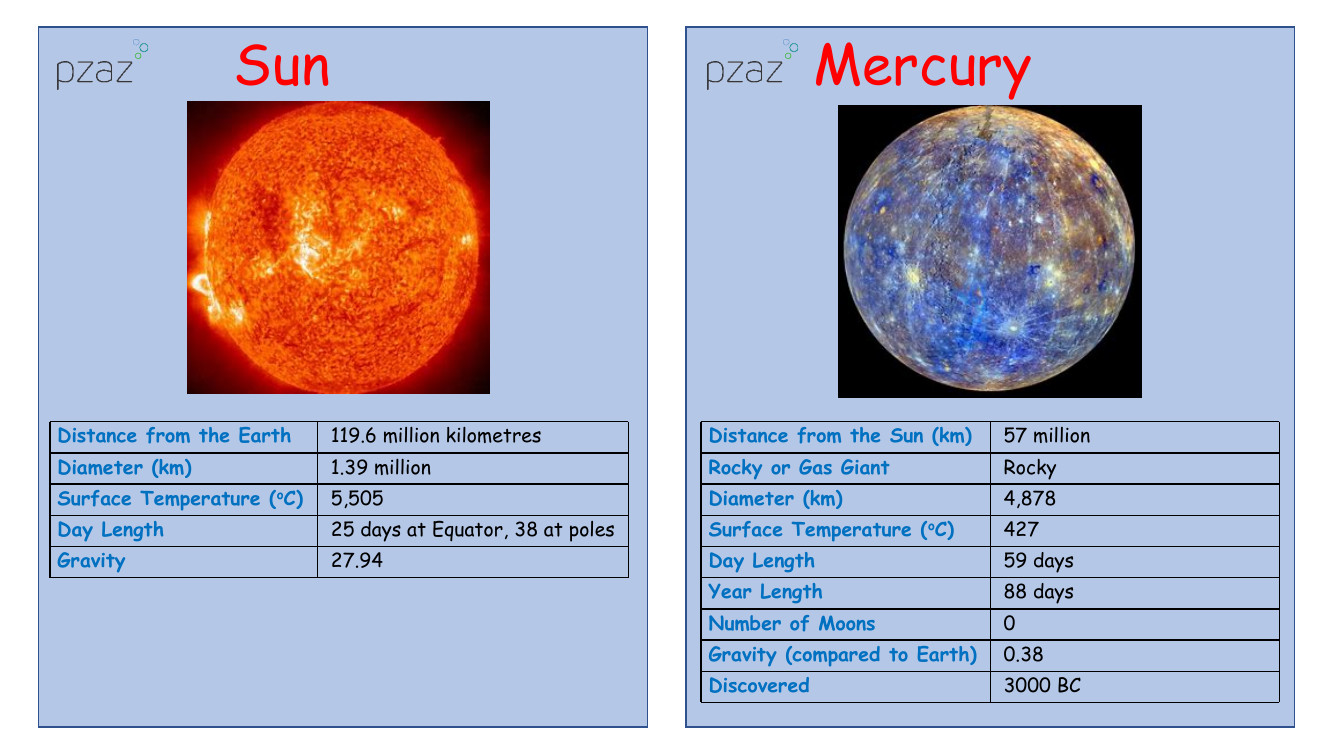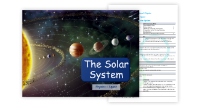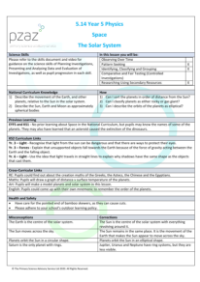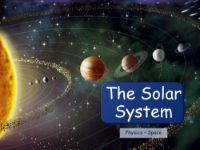The Solar System - Planet Cards

Science Resource Description
The Solar System is a vast and intriguing expanse, featuring a variety of celestial bodies, including the Sun and planets such as Mercury and Venus. The Sun, sitting at a distance of 119.6 million kilometres from Earth, boasts a massive diameter of 1.39 million kilometres and a scorching surface temperature of 5,505°C. Its gravity is 27.94 times stronger than that of Earth, and it has different day lengths at its equator (25 days) compared to its poles (38 days). Mercury, the closest planet to the Sun, is a rocky planet with a diameter of 4,878 kilometres. With a surface temperature of 427°C, a lengthy day of 59 Earth days, and an 88-day year, it has no moons and only 0.38 times Earth's gravity. It was known to ancient civilisations since 3000 BC.
Venus, another rocky planet, orbits the Sun at a distance of 108.2 million kilometres. It has a diameter of 12,104 kilometres and an extremely high surface temperature of 482°C. Venus experiences long days, each lasting 243 Earth days, and completes its orbit in 224.7 Earth days. With gravity nearly as strong as Earth's at 0.9 times, Venus has no moons and was also known since 3000 BCE. Earth, our home planet, is situated 149.6 million kilometres from the Sun. It has a diameter of 12,756 kilometres, a comfortable average surface temperature of 15°C, and a gravity that serves as the baseline for comparisons. Earth has a 24-hour day, a 365.25-day year, and is orbited by a single moon. Unlike the other planets, Earth's discovery is not applicable as it is our vantage point for observing the Solar System.






